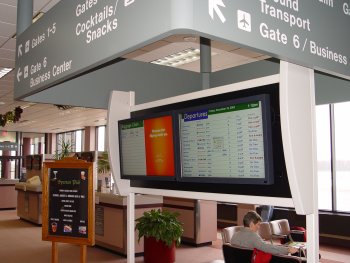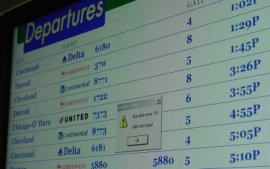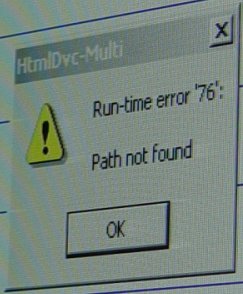My Christmas trip to Alabama began at the Lansing airport.
 LAN is very small as airports go: a handful of airlines offers a handful of daily flights. The only direct flights are to hubs such as Detroit, Minneapolis, Chicago, or Cincinnati. Northwest flies a couple of DC-9s in and out but the other flights are turboprops or regional jets. LAN struggles to compete with Detroit Metro and with Flint Bishop – and often loses.
LAN is very small as airports go: a handful of airlines offers a handful of daily flights. The only direct flights are to hubs such as Detroit, Minneapolis, Chicago, or Cincinnati. Northwest flies a couple of DC-9s in and out but the other flights are turboprops or regional jets. LAN struggles to compete with Detroit Metro and with Flint Bishop – and often loses.
The airport authority hired a new director several months ago, and he’s taken some visible steps to spiff up the facility. He’s added a new business center, joined the local airlines in a “Fly Lansing” marketing campaign, and launched a FlyLansing.com Web site. I noticed on this trip that he’s also replaced aging CRT flight status monitors with plasma screens.
The new monitors are a welcome improvement; the old displays at LAN were showing their age. The screens suffered from “burn-in” so severe that they were barely legible. There wasn’t much screen real estate to work with, so they jammed in abbreviated information. It was kind of like the old days, when airport monitors showed video images of real push-pin white letters on black felt backboards.
 Actually, it was worse; those old black and white monitors were more readable.
Actually, it was worse; those old black and white monitors were more readable.
Sadly, on this trip there were many more occasions to stare at the new monitors than I desired. My Holmesian powers of observation told me that the flight to Detroit obviously was going to be late: there was no jet at the gate about 10 minutes before usual boarding time. I knew that the plane was supposed to fly in from Detroit and then turn around and fly back. If it was more than 45 minutes late, I'd miss my connection, so I really wanted to know the status.
As I was checking and re-checking the monitors, I noticed what appeared to be a Windows dialog box with an error message on screen.
 My wife says I should've pressed the OK button to see if the message went away.
My wife says I should've pressed the OK button to see if the message went away.
Googling the error message reveals that this is probably a Visual Basic application, and the programmer either is looking for a file in the wrong place (e.g. his own hard drive) or a separate error causes a needed file to be missing on the server driving the monitors. In any event the programmer failed to code up an error handler; too bad, because all the essential information appears to be on-screen. I wonder if someone at plasmaairportdisplays.com is reading this?
I told this story to my buddy Chuck Severance who had an even better tale: recently while driving on an LA freeway, he spied a billboard that was in fact a giant monitor screen. Nice if you can afford it; the billboard can be updated instantly. But there's a downside: technology goofs in ways that paint or paper cannot. In this case thousands of passing motorists stared at a strange error message -- obviously a Windows error display writ large.
This isn't a life or death application -- though you do hope air traffic control displays never behave this way. So what's the answer? Hire better programmers? Test more carefully? Use some other programming environment besides Visual Basic? Somehow I bet those old push-pin letters with a camera pointed at them never suddenly emitted a strange Windows error dialog box.